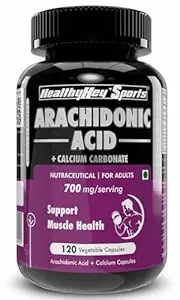In the health supplements industry, the label on the container serves as the most visible source of information for the consumer. While the common perception is that a label just names ingredients, in reality it is a structured language of its own, where every detail can either confirm authenticity or expose potential compromise.
The order of ingredients provides the first meaningful sign. A genuine supplement lists components in descending order of their relative concentration, giving a clear sense of what truly makes up most the formulation. If a consumer is seeking a product for a functional mineral, the placement of that ingredient matters greatly because it shows whether the intended element is dominant or only present in symbolic trace amounts. For instance, if Magnesium Carbonate is listed towards the end of the ingredient list, the active contribution it can make to magnesium intake is likely minor. The order is not arbitrary; it is guided by measurement, and understanding this order helps to avoid overpaying for products built on fillers with only a token appearance of the active ingredient.
Labels also disclose the form in which nutrients are delivered. A compound by itself does not guarantee efficacy, because absorption varies depending on structural forms. The description of a nutrient’s form gives precise insight into how well the body can utilise it. Certain compounds may look impressive on the label but, in technically poor forms, have very limited bioavailability. When observing a label that lists Arachidonic Acid, one should check whether an explanation is given about the form or the context in which it is delivered. This fatty acid plays functional roles in cell signalling and growth response, but the benefit depends on its balance with other lipids and its dosage stability. Without clear labelling of form and context, the risk emerges that the compound is either inactive or included in a way that disrupts rather than supports biological balance.
Additives and excipients, though often overlooked, communicate much about purity. Fillers, flow agents, colourants, and preservatives are sometimes necessary for stability, but the manner in which they are presented exposes whether the manufacturer values transparency. Generalised terms without specificity, such as “proprietary blend” or “natural agents,” reduce clarity and may hide substances that serve little more than to bulk up content. By contrast, precise language such as “microcrystalline cellulose” demonstrates disclosure. Recognising the difference educates the consumer on whether the product is invested in purity or merely decorated with marketing convenience.
You will find valuable information such as batch numbers, expiry dates, and storage instructions. The quality and the potency of the supplements deteriorate with time. A label that omits or generalises these aspects reduces accountability. Authentic manufacturing accounts for shelf life precisely, explaining both the duration of potency and the required conditions to maintain it. Consumers who take the time to match production detail with expiry limits are more likely to avoid deteriorated or unstable supplements that fail to deliver claims.



